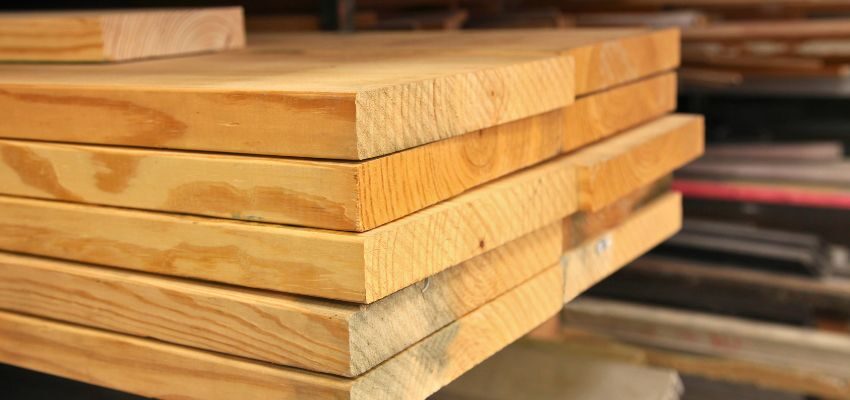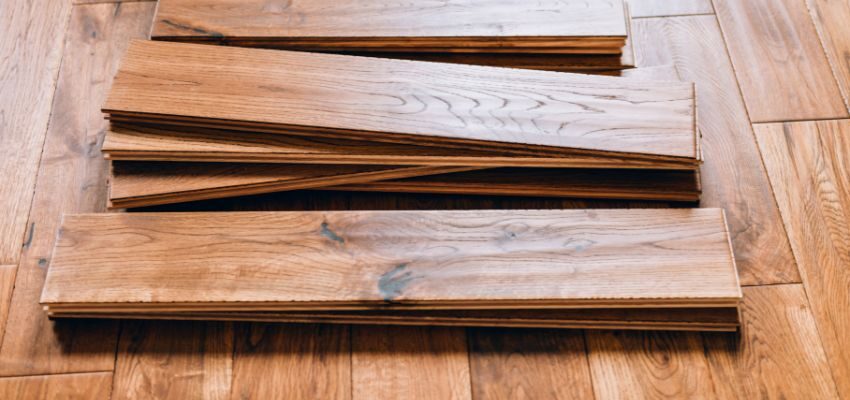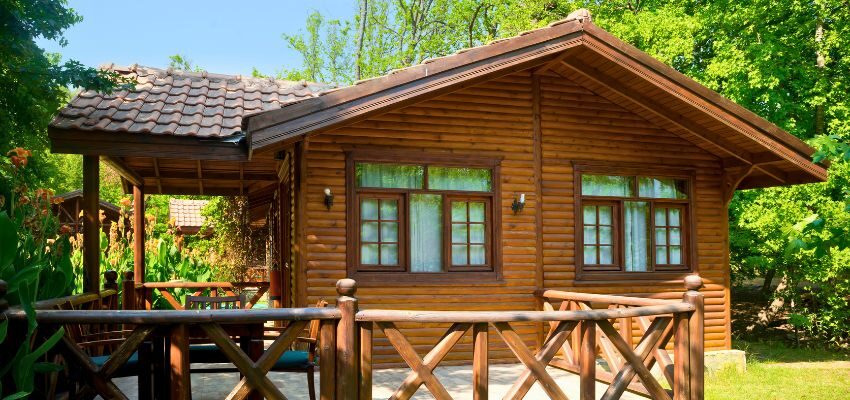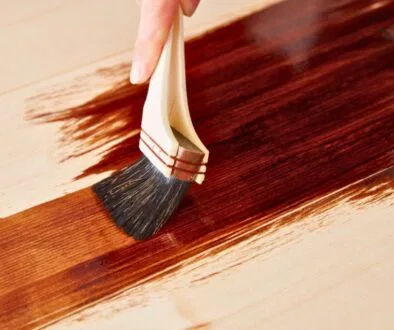Your Ultimate Guide To Wood Fireproofing For Your Home

Published June 25, 2025
Wood imparts warmth and charm to any home, from stunning furniture to timeless construction. But did you know it also poses a hidden fire risk? As a natural, flammable material, wood can quickly become a hazard if not properly treated. That’s where wood fireproofing steps in—offering an innovative solution to keep your home safe without sacrificing the beauty of its wooden features.
In this article, we’ll cover the basics of fireproofing for wood. We’ll look into the available methods and key considerations. By the end, you’ll know to make smart, confident decisions to protect your space. Let’s get started.
What Is Wood Fireproofing?
Wood fireproofing reduces flammability and slows fire spread. It involves treating wood or using fire-resistant types. While wood can’t be made completely fireproof, these treatments add valuable time during emergencies. Extra minutes can save lives and reduce damage. Fireproofing is a wise choice for fire-prone areas, wooden structures, or furniture.
Benefits Of Wood Fireproofing
- Improved safety: Slows the spread of fire, reducing risk.
- Asset protection: Safeguards wooden furniture and interiors.
- Critical time: Provides valuable seconds for evacuation during emergencies.
Explore fireproofing options to find what works best for your needs. Improve safety, meet regulations, or secure property insurance benefits easily.

Methods Of Wood Fireproofing
Fireproofing wood is essential for improving safety in homes and businesses. It helps reduce the risk of fire damage. Whether building new structures or upgrading old ones, fireproofing is a smart choice. Here are some reliable solutions to help you find the best one.
Fire-Retardant Treated Wood (FRTW)
Fire-retardant treated wood (FRTW) is infused with chemicals to resist flames. This process uses high-pressure systems to push the chemicals deep into the wood. The result is lower combustibility and reduced smoke during a fire.
The benefits of FRTW include:
- Significantly slows combustion
- Reduces flame and smoke spread
- Permanent fire resistance when installed indoors
Always check for fire-rating certifications. Look for labels like “FIRE RATING 1 HOUR,” which indicate that the wood can resist fire for a specified duration. If certification is absent, the product might not qualify as fire-retardant.
FRTW is highly effective, but it tends to be on the pricier side. Therefore, it’s most suitable for new builds rather than retrofitting existing structures.

Naturally Fire-Resistant Hardwood
Another method of fireproofing is using naturally fire-resistant hardwoods. These dense and thick wood types boast high heat resistance due to their physical properties. Examples include:
For greater heat resistance, try ironwood species like Azobe. These woods handle high temperatures very well. They’re especially effective as fire-resistant materials in construction.
Unlike treated wood, fire resistance in this category doesn’t wear off over time as it comes naturally from the wood’s density and thickness. However, availability and cost might make it less accessible than other wood types.
Looking for authentic hardwoods like oak or walnut with natural fire resistance? Vintage & Specialty Wood curates premium, reclaimed hardwoods that combine beauty with function.
Fire-Retardant Coatings And Sprays
Fire-retardant coatings or sprays are popular for retrofitting or fireproofing existing wooden surfaces. Typically, these are chemical solutions applied directly to wood for added resistance to flames.
The common types of coatings include:
- Oil-based coatings for robust protection
- Solvent-based epoxy coatings for durable applications
- Water-based sprays for eco-friendly options
The typical cost for fire-retardant coatings is approximately $1.50 per square foot, including labor. Coatings and sprays work well but aren’t permanent. They usually last 2-5 years before reapplication is needed. Use high-quality products for better durability against humidity and UV exposure.
How Long Do Fireproofing Treatments Last?
The longevity of fireproofing treatments depends on the solution applied. Permanent options, such as FRTW or natural hardwood, provide durable, long-term protection.
Temporary solutions, such as fireproofing spray for wood, need regular maintenance. However, they’re a cost-effective way to protect existing structures.
Key Considerations For Wood Fireproofing
Fireproofing wood adds safety by giving extra time during emergencies. But it’s essential to weigh the costs, maintenance, and limitations. This helps you decide if it’s the right choice for your home.
Fireproofing wood adds safety by giving extra time during emergencies. But it’s crucial to weigh the costs, maintenance, and limitations. This helps you decide if it’s the right choice for your home.
- Costs: Fireproofing options vary widely, from basic coatings starting around $1,000 to premium treatments costing up to $5,000. Plan your budget accordingly.
- Fireproof vs. Fire-Resistant: Fireproofing doesn’t make wood completely fireproof. It slows the spread of flames. This gives more time for evacuation and emergency response.
- Maintenance: Fireproof coatings may need reapplication. This ensures they remain effective over time.
Homeowners should consider these factors carefully. This will help them decide if fireproofing fits their safety needs and budget.
Choosing The Right Fireproofing Method
Choosing the proper fireproofing method is crucial for safety. It protects your property and minimizes risks. Whether it’s new construction or a retrofit, consider key factors.
New Construction Vs. Retrofitting
- For new builds: Choose fire-retardant-treated wood (FRTW) for protection. Alternatively, use naturally fire-resistant hardwoods.
- For existing structures: Fire-retardant coatings and sprays are perfect for retrofitting. They are flexible and easy to apply.
Budget Considerations
- Upfront investment: FRTW and fire-resistant hardwoods may cost more upfront. However, they need little to no maintenance over time.
- Lower initial cost: Fire-retardant coatings cost less upfront. However, they require regular reapplication, leading to ongoing expenses.
Certifications And Standards
Check a product’s fire rating before buying. Look for certifications like ASTM or UL. These ensure it meets fire safety standards and gives you peace of mind.
Frequently Asked Questions
Is treated wood completely fireproof?
No, fire-treated wood is not entirely fireproof. It’s designed to resist ignition and slow fire spread, but it will still burn under extreme conditions.
Can furniture be fireproofed or just structural wood?
Yes, fireproofing works for furniture and structural wood. Use specialized sprays or coatings. They are great for treating furniture, paneling, or trim to improve fire resistance.
How much does fireproofing cost?
The cost of fireproofing varies, typically ranging from $1,000 to $5,000, depending on the method used. Coatings, for example, average around $1.50 per square foot installed.
How can I verify fire-resistant wood?
To ensure the wood is fire-resistant, check for certifications such as “FIRE RATING 1 HOUR.” If no label is present, the wood may not meet fire-resistance standards.
Is fireproofing worth the investment?
Absolutely. Fireproofing adds an extra layer of safety and peace of mind, especially in high-risk areas or regions prone to wildfires.

Secure Beauty, Preserve Safety: Why Wood Fireproofing Matters
Protecting your home or business from fire starts with fireproofing your wood. It’s a smart, essential step to safeguard your space, investments, and loved ones during emergencies. Whether you’re building from scratch or upgrading, there’s a wood fireproofing solution to fit your budget and plans. From walls to furniture and flooring, fireproofed wood not only boosts safety but also brings peace of mind. Take action today and make safety your top priority!
Ready to combine timeless wood with modern safety? Explore premium reclaimed materials at Vintage & Specialty Wood — where character meets fire protection. Browse their collection today and take the next step toward a safer, stunning space.
Hire The Timber Experts For Your Next Project
Vintage & Specialty Wood should be your source of the highest quality timbers from around the world. When it comes to fabricating and installing reclaimed wood or specialty wood products in your home, we don’t cut corners. We offer many reclaimed wood and specialty wood products such as Douglas Fir, white oak, and much more. We also offer timber framing and wood flooring services as well. Contact our team today to speak to a timber expert about what Vintage & Specialty Wood can do for you.

This Blog Is Fact Checked
This content has undergone meticulous fact-checking by our team of internal experts. Gain a deeper understanding of the high editorial standards we uphold on our website here.

About The Author
Experience, exploration, and knowledge are the hallmarks of writer Rei Bayucca. Her dedication to crafting articles that both inspire and educate will leave you thinking long after you’ve finished reading.




